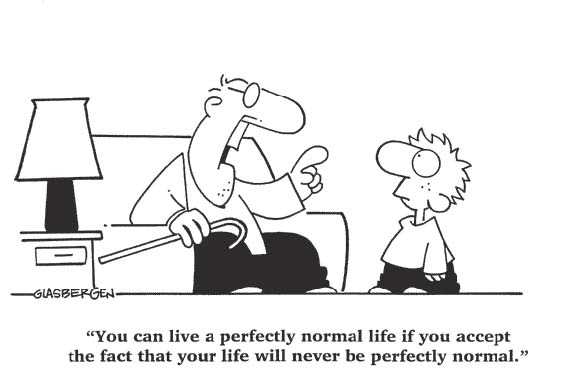Lesson 1 - Review and Defining Abnormal Behaviour
A Working Definition of Abnormal Behaviour
The definition is based on the work of Holmes (1994) who bases the definition on three criteria, two of which, for the purpose of this course, will be accepted entirely and the third only with caution. The criteria are:
 Whether an individual is distressed by his/her behaviour -- If a woman is so depressed that she cannot even eat, clothe, or bathe herself, and she wants to be happy, then we can assume the woman is not living her ideal life. The woman's debilitating depression can be considered abnormal behaviour.
Whether an individual is distressed by his/her behaviour -- If a woman is so depressed that she cannot even eat, clothe, or bathe herself, and she wants to be happy, then we can assume the woman is not living her ideal life. The woman's debilitating depression can be considered abnormal behaviour.
Whether the behaviour affects the individual's life or functioning in a negative way -- If a woman has a phobia of other people's hair (trichopathophobia), for example, and thus cannot go out to shop for groceries, work in an office building, or go to a movie, the phobia is affecting her life negatively. The behaviour, therefore, can be considered abnormal.
Whether the behaviour is deemed culturally acceptable - In Canadian culture it is not common for people to greet other people by kissing them on top of the head. If a person engages in this type of behaviour, he or she may be considered abnormal. Because Canada has people from diverse cultural backgrounds, this last determinant of abnormal behaviour must be considered carefully.
In essence, any definition of abnormality will be limited in some way, but a definition must be used nonetheless. No one definition of abnormality is the best. Everyone and every culture recognizes some form of abnormality even if it cannot be defined easily. An important thing to remember is to be open-minded and flexible and allow your definition to change in light of new information.
In summary, behavior that causes subjective distress of the individual, behavior that is psychologically or socially disabling, and behavior that deviates from social norms is considered abnormal.
